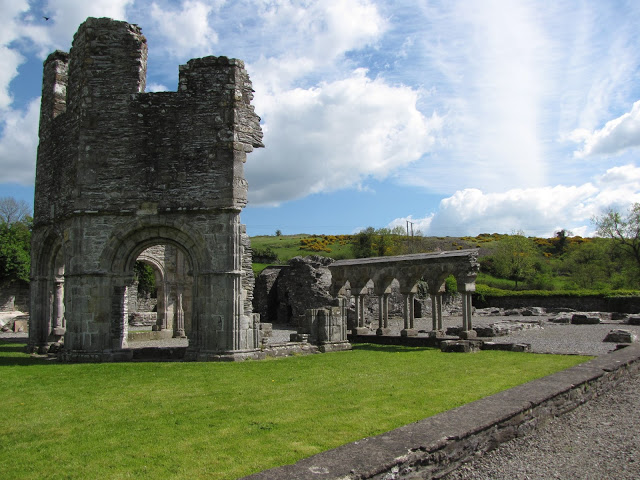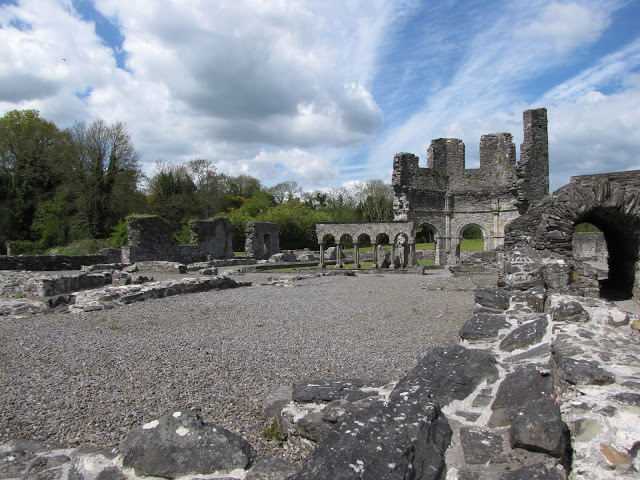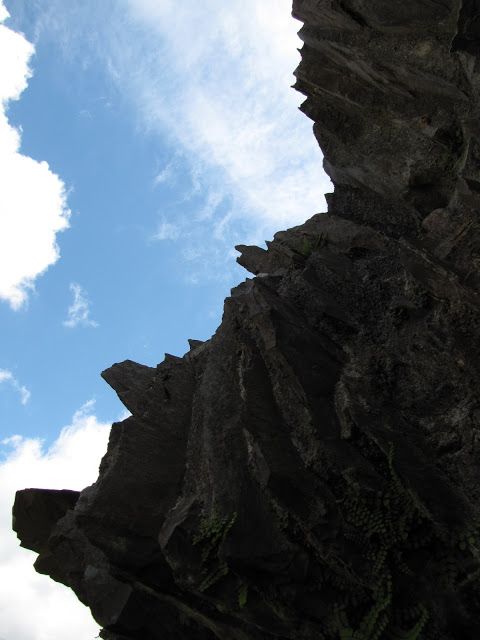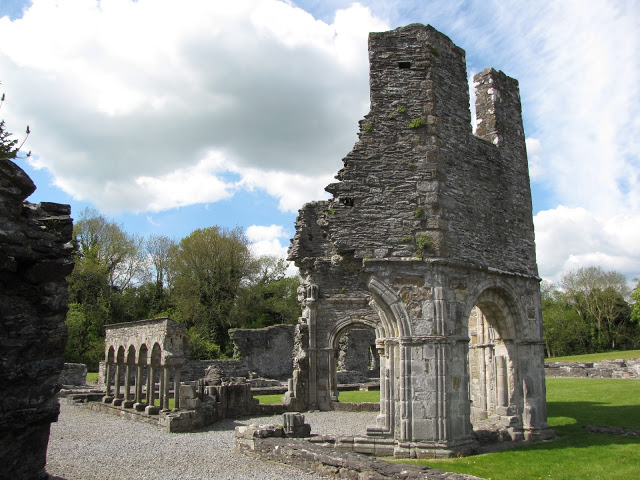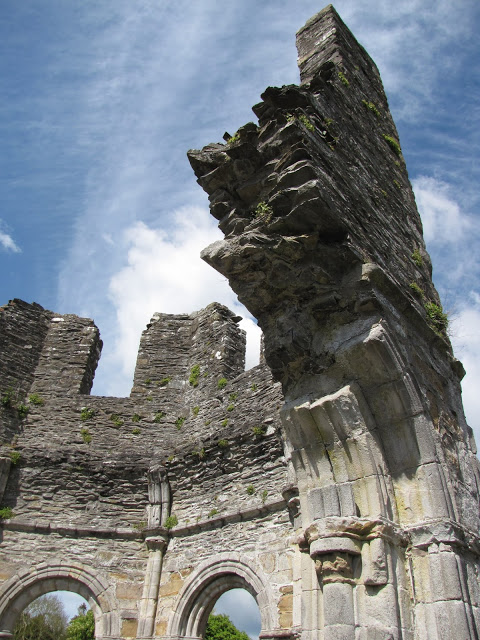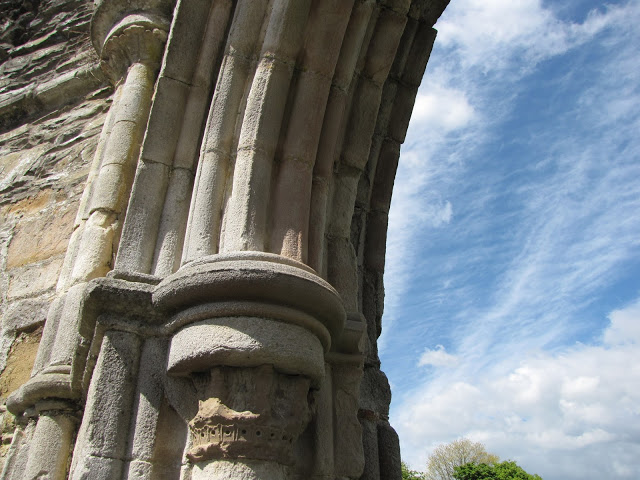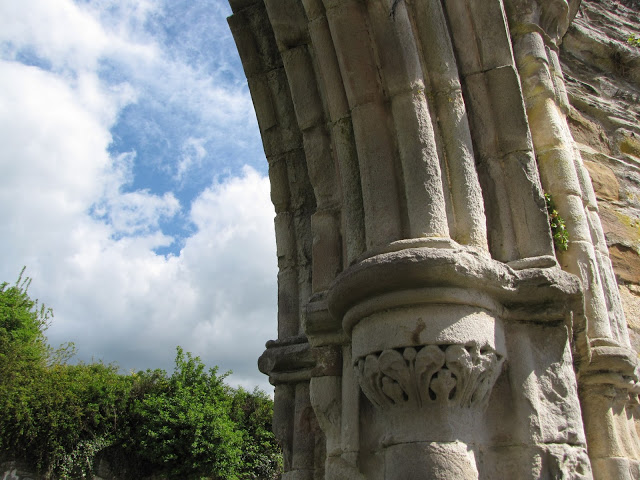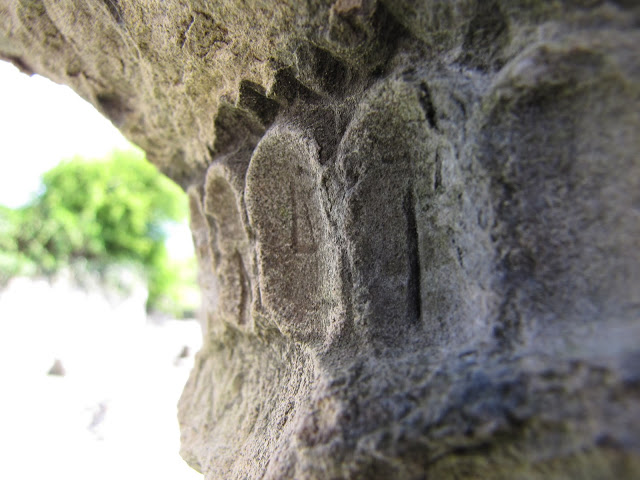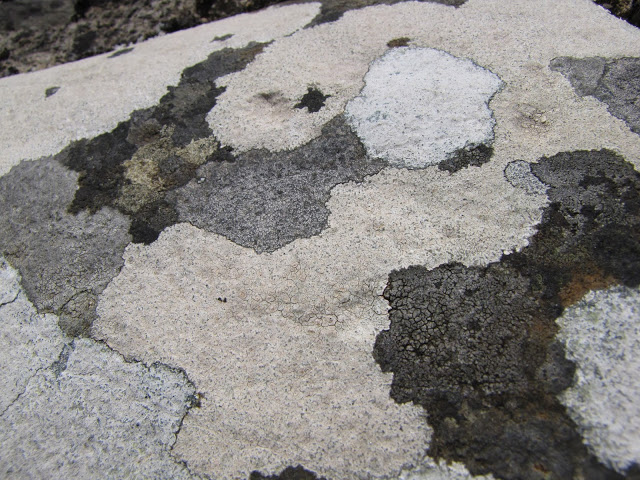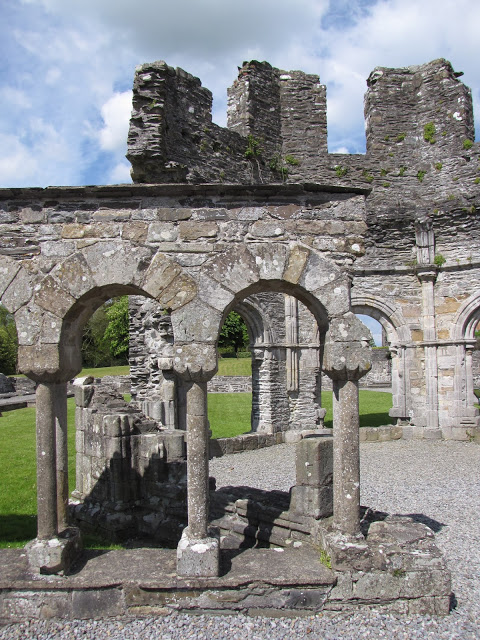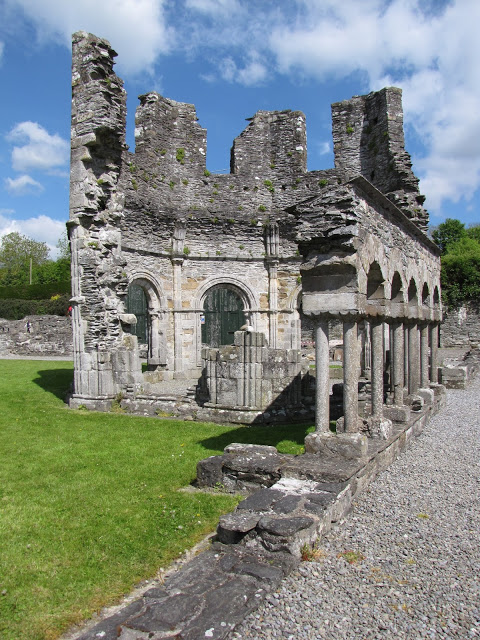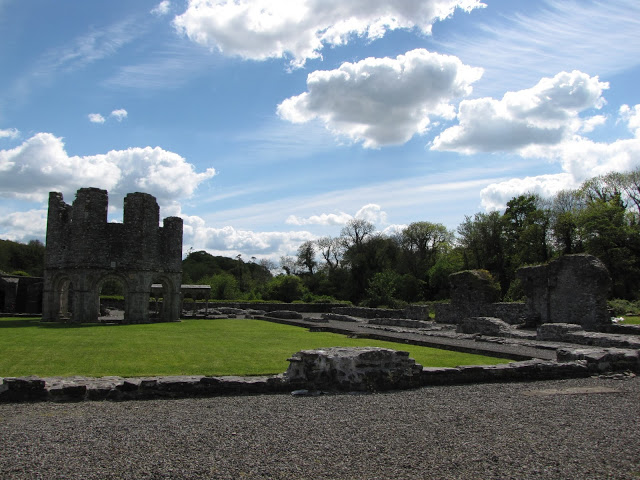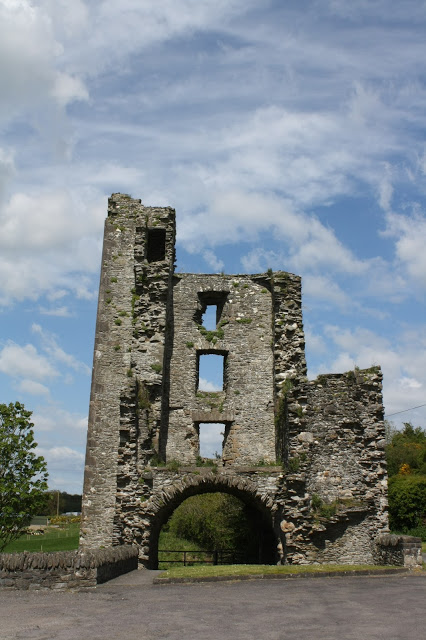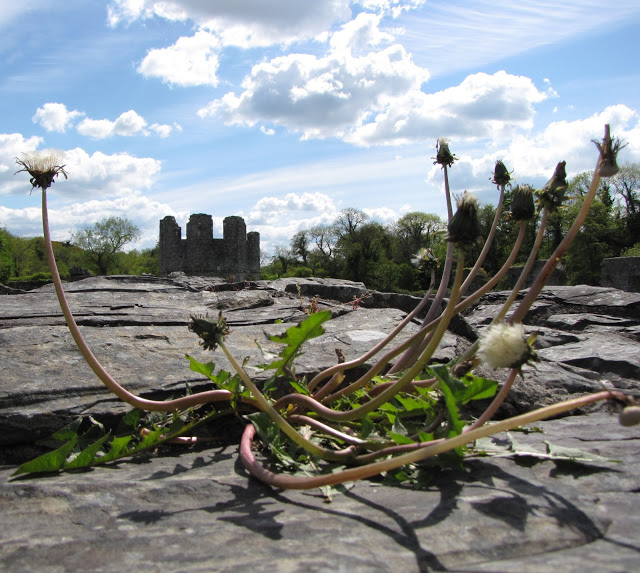About seven centuries and 8.5 miles of country roads separate Old Mellifont Abbey from our next stop. The ancient monastic settlement of Monasterboice (Mainistir Bhuithe, or “monastery of Buithe”) was probably founded in the late 5th or early 6th centuries by St. Boyne (St. Buithe), a follower of St. Patrick whose name is now shared by the nearby river and valley. It was an important religious and intellectual center of Celtic Christianity until Mellifont Abbey and the Cistercian order displaced it in the 12th century. Now primarily a cemetery encircled by a low, stone wall, the site includes the remains of two small churches, an imposing but topless round tower, and enormous, heavily decorated Celtic crosses. From a distance, however, these features tend to be subtly camouflaged amongst the cemetery’s full trees and more recent gravestones. Across the street, a gleaming field of bright yellow rapeseed abuts the parking lot.
Monasterboice’s three medieval High Crosses date from the 10th century. Composed of a circle—representing the sun—overlaying the upper portion of a Roman cross, Celtic crosses are tangible examples of the syncretism that occurred between native traditions and the foreign import of Christianity. Like most religious art of the middle ages, their carvings served a didactic purpose and may have been brightly painted for better legibility. No traces of polychromy now exist, however, so theories concerning their original appearance remain purely speculative.

The North cross, standing closest to the road, is the simplest, most inconspicuous, and most damaged of the three. Only the upper portion of the original, with a central image of Christ, remains.

The West cross, located closest to the round tower and the ruins of one of the site’s two later churches, is the tallest of the group at 21 ft. Carvings of biblical scenes and abstract patterns envelope its surface, although the details of the figures have largely worn away.

Nearby stands Muiredach’s Cross, known for its particularly fine and well-preserved carvings featuring scenes from the life of Christ and the Old Testament. It is named for the inscription at its base, which (according to my DK guide) reads: “A prayer for Muiredach by whom this cross was made.” Despite standing at an impressive 18 ft., Muiredach’s Cross seems almost squat next to the slim, taller forms of the Western cross and round tower.
Even without its roof, the site’s 10th or 11th century round tower stands at 110 ft., although it was once significantly taller. Burials raised the ground level of the cemetery, and as a result the tower’s entrance appears to float just above the earth. When it was first constructed, the same opening would have been installed at least 15 feet up, reachable only by ladder.
Narrow, free-standing structures, round towers were used for both storage and protection against Norse invaders, but were only partially effective in either case. In 1097, Monasterboice’s tower went up in flames, and the medieval manuscripts it contained were destroyed.

All photos by Renée DeVoe Mertz, May 24, 2013.










